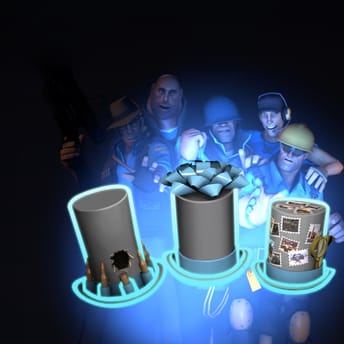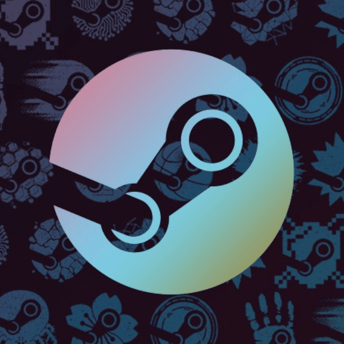
Valve hands knives back to real players in Counter-Strike 2
|
|
Counter-Strike 2‘s item economy changed drastically. The Trade Up Contract now lets players turn five Covert skins into a knife or a pair of gloves, and five StatTrak Coverts into a StatTrak knife. It is the first time knives and gloves are craftable rather than locked behind case openings or direct purchase from the market.
The Steam CS2 market moved immediately: listings jumped, spreads widened, liquid knives repriced significantly lower, and lots of red-tier skins rose as inputs. The widely quoted 1.5 to 2 billion dollars “lost in a day” is a mark-to-market snapshot of listed inventory, not actual money, and it does not reflect actual trading.
The knife segment was thin and speculative, so the change punctured the bubble rather than taking anything away from players. Below, we explain what happened, why the $2B snapshot is methodologically weak, and what actually moved. We also cover what changed, who felt it, why Valve likely did this, and what to expect next.
CS2 Steam Community Market: What happened
On October 23, 2025, Valve shipped a “small update” to CS2 that, without prior announcement, rewired item rules in a big way. The Trade Up Contract now lets players exchange five Covert-rarity skins (including StatTrak items) for a knife or a pair of gloves.
In Counter-Strike 2, skins are organized by rarity: Consumer Grade (white), Industrial (light blue), Mil-Spec (blue), Restricted (purple), Classified (pink), Covert (red), and knives and gloves (gold), plus StatTrak variants.
The Trade Up Contract lets you exchange items of the same rarity for one item of the next tier, with the outcome drawn from the collections you used. StatTrak inputs yield a StatTrak output; you cannot mix StatTrak and non-StatTrak in one contract. The resulting wear (float) is somewhat based on the wear of your inputs, too.
It’s the first time knives and gloves are craftable rather than gated behind case openings or costly direct buys, and it landed alongside the return of the official Retakes mode.
The market reaction was instant. Listings and traffic spiked, spreads blew out, and high-liquidity knives repriced sharply while some Covert items jumped as trade-up inputs.
Early tallies put the one-day mark-to-market hit to CS2 skins at $1.5-2 billion, after a brief hiccup in which freshly crafted items appeared untradable before Valve corrected it.
However, this metric has no real analytical value and fails to capture actual market conditions. The market cap of CS2 is widely referenced, but the market was (and is still partly) speculative and overinflated; we will address this in detail below.
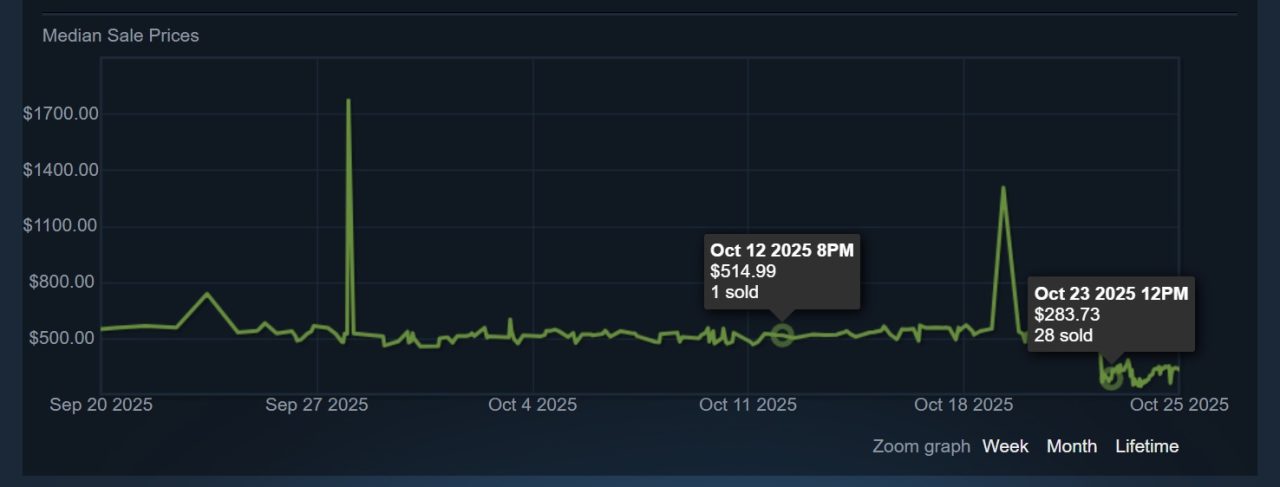
CS2 knife trade-up: Who is affected
For gamers and casual traders or flippers, the change is positive. Entry prices for most knives are lowered (while some other items, depending on rarity, become more expensive), liquidity is higher, and choice is wider. Volatility creates short windows both to get something you want in-game for cheaper or to simply flip.
Collectors are broadly OK. Rare patterns and items are repricing slowly, and even if already-owned items have become cheaper, the point is to collect and showcase something rare in-game or on a Steam profile, not to hold an asset to sell later.
The only group materially hurt is investors or whales with large knife stockpiles: valuations fell sharply, order depth thinned, and people started acquiring knives without third-party services. One could sympathize, but this group has been inflating the CS2 skin market for years.
Turns out, using the walled garden, initially created for gamers to swap skins, for irl enrichment instead is a terrible idea.
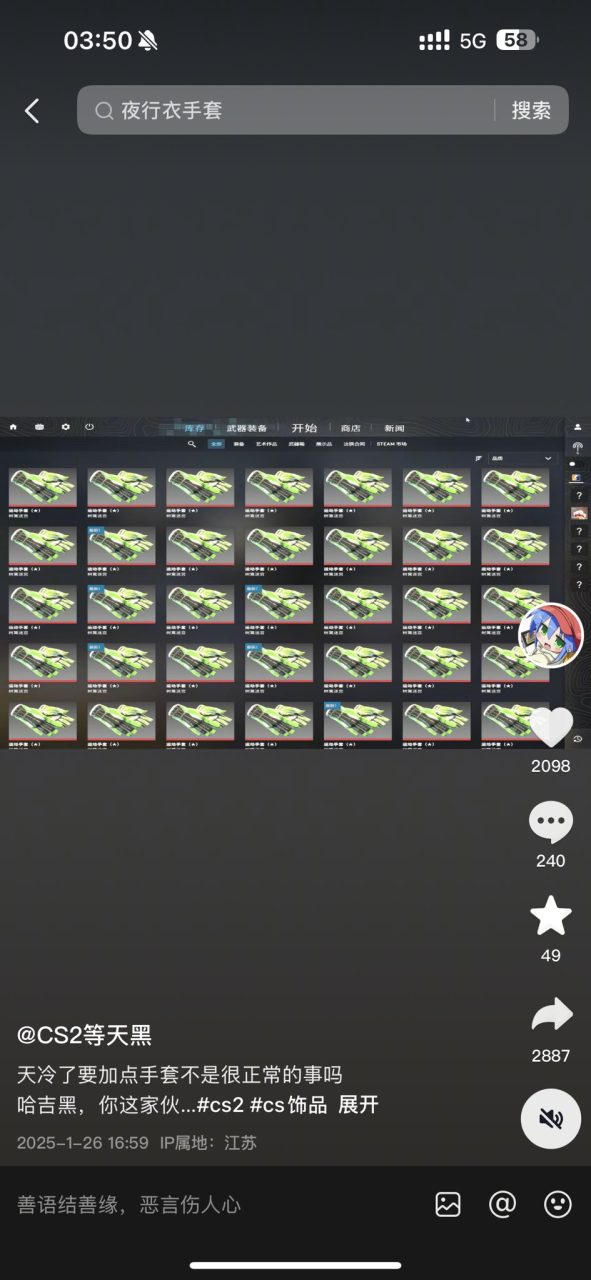
Problem with CS2 market cap statistics
Everyone rushed to claim that the Counter-Strike 2 skin market lost roughly $1.5 billion in a single day, down from about $6 billion to roughly $4.5 billion. As a reminder, Valve provides limited market statistics, and this particular figure is not official, even though it is still precise.
The problem is that the figure is a mark-to-market snapshot, not realized money. It’s effectively the change in the notional value of listed inventory between two points in time, assuming every knife could sell at the snapshot price with zero market impact, no fees, and no latency.
In reality, there are plenty of listings no one takes, many of which are stale or strategic to manipulate the market, and only a small fraction of high-value items actually transact on a given day (not counting third-party marketplaces, obviously). So the dollar total dramatically overstates actual knife trading activity and the realized losses in the Steam marketplace.
Speculative assets
The knife segment has also been structurally inflated for years. Large holders set soft floors, with auto-buy bots set to undercut other deals. Lowball offers pulled supply from casual players at significantly lower prices, or, often, outright stealing and scams were involved. All these fed inventories that then anchored visible prices higher.
That feedback loop made the surface valuation look rich relative to the official marketplace’s true executable liquidity. When the rules changed and a new supply path opened, those paper valuations compressed quickly.
Finally, the richest flow isn’t in the snapshot: high-value sales and bulk or private deals often clear on third-party sites with different fee stacks and better cash-out options. Those volumes (and the prices they clear at) are not visible in Steam’s listings.
Twitch is flooded with ads for third-party services bought through CS streamers. As a reminder, you cannot officially withdraw money from Steam; wallet funds can only be spent on Steam.
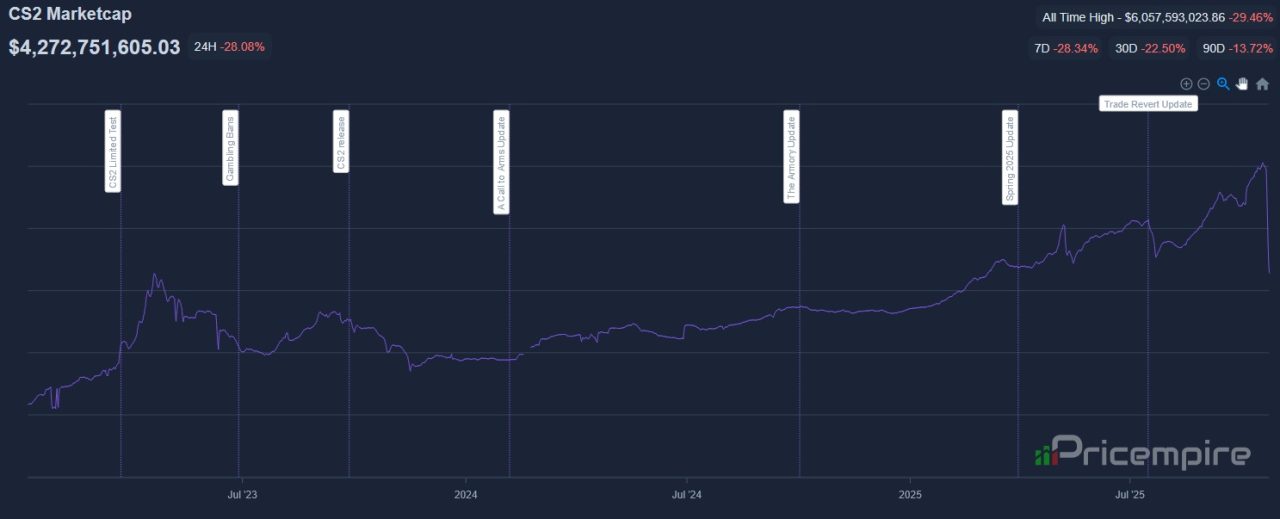
Why Valve made this decision
Valve is unlikely to offer a public statement on why it changed the rules. Still, the most logical reasons behind the decision are explained below.
Market activity
First, to rejuvenate the market. Knife scarcity had pushed prices to levels where only whales set floors, and many players stopped participating.
By opening a deterministic path to knives via trade-ups, Valve broadens the buyer base and unlocks frozen inventories (because red-tier skins now have utility as inputs, whereas most previously gathered dust apart from those used in-game).
Real price discovery has been restored: more active listings, tighter spreads, and higher transactional throughput (and fee revenue for Valve) rather than a museum of stale and inflated asks.
Third-party markets
Second, to pull volume back from the gray market and reduce scam activity. A significant share of high-value or bulk trades had drifted to third-party sites with cash-out rails and looser rules (and Valve got nothing from those deals).
Making top-tier items craftable within the Steam economy reduces the appeal of those platforms, weakens bot-driven undercutting and arbitrage loops, and funnels activity into an environment Valve can police (identity, chargebacks, fraud).
Gambling
Third, to dial down the gambling component of acquiring top rewards. Historically, knives and gloves were gated behind RNG-heavy case openings, skewing incentives and optics.
A trade-up route doesn’t eliminate randomness, but it replaces pure slot-machine dynamics with a more straightforward, controlled path. This is better for user trust, regulatory posture (especially in Europe), and the long-term health of the CS2 item economy.
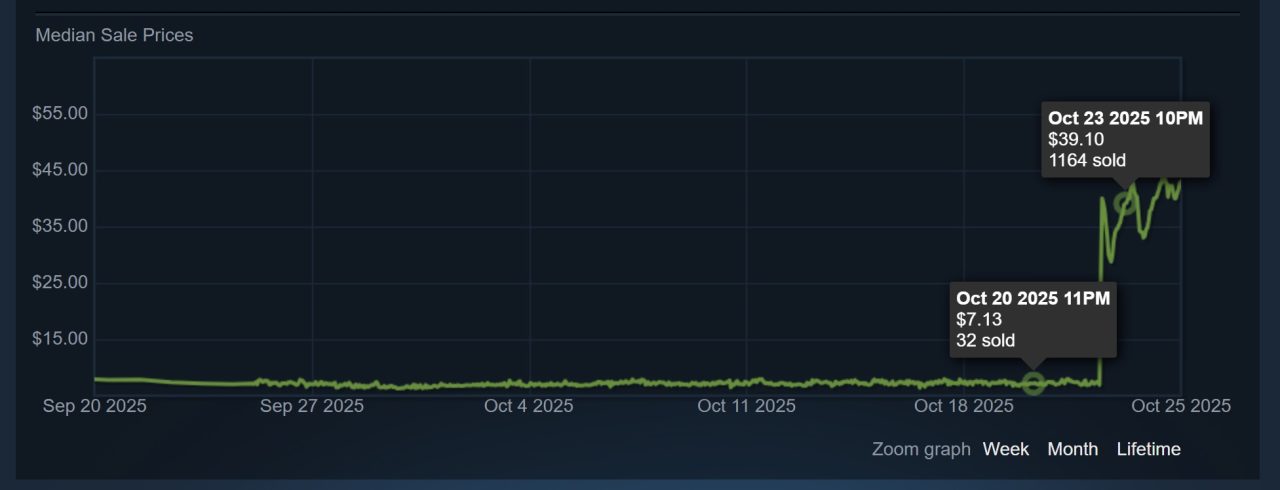
What Valve did before
Since late 2015, Valve has layered on various rules to curb market abuse:
- Starting December 9, 2015, Valve required the Steam Guard Mobile Authenticator (or else trades sat in a 1-3-day escrow) to cut account-hijack scams (Valve refined those holds in a March 1, 2016, update).
- In May 2017, Valve overhauled Steam gifting, blocking cross-region gifts when price gaps were significant to curb reseller regional arbitrage.
- On March 29, 2018, CS:GO items received in a trade began inheriting a seven-day cooldown before they could be traded again, throttling bot-driven pump-and-dump schemes.
These measures worked unevenly: escrow and cooldowns cut quick-flip fraud and slowed mass bot loops, while gifting changed region-price exploits; traders adapted with off-platform marketplaces, delayed rotations, and inventory parking.
Today’s change, letting players craft knives via trade-ups, along with the older Trade Protection system, further shifts incentives. It both broadens on-platform liquidity and pulls volume back from third-party platforms.
Problems of third-party CS2 marketplaces
Third-party marketplaces sit outside Steam’s rules and oversight. Their pricing and order books are opaque, fees vary, and much of the trading happens privately. That means quotes are hard to compare, data is inconsistent, and snapshots rarely show what is actually executable. This makes manipulation easy.
Security is the other complicated problem. Clicking “Sign in through Steam” on a random trading site can result in a stolen account. Even if the platform is legit, reversals and chargebacks are common, and gate withdrawals are delayed by surprise KYC holds after you’ve deposited items. Impersonation of staff via Discord, fake verification bots, and domain look-alikes are common, too.
To sum up, manipulations on official markets push users to take counterparty and operational risks that don’t exist on Steam, and the best outcome is getting an item at an still inflated, but slightly lower price or getting money out of the Steam ecosystem.
CS2 market bubble was bound to burst
Major holders accumulated large quantities of items in the same way each cycle. Auto-buy bots scooped up any undercut below a defended floor, persistent lowballing pulled knives from casual players at a discount, and private off-platform deals consolidated rare pieces. Over time, this built inventories large enough to influence what other traders saw.
Once whales built large inventories, they could steer visible prices by timing relists, staging small quantities of sales at target levels, and coordinating undercuts to flush other sellers before absorbing the supply.
Communication on a private Discord server and influencer shout-outs amplified this, with selective screenshots and “last sold at” stat on Steam making thin liquidity look like real demand, so a handful of accounts could sway sentiment in illiquid tiers for hours.
Steam’s item economy wasn’t designed to be a long-term investment platform: liquidity is episodic, fees are heavy, policy risk is absolute, and no official way to withdraw money.
Pump-and-dump mechanics break the moment policy changes introduce a new supply path or remove a choke point (as with current trade-ups to knives) because the defense of soft floors depends on perpetual bot absorption and fresh entrants. When that loop snaps, mark-to-market inflated wealth evaporates in a moment.
Steam’s marketplace isn’t a place to dump your 401(k) or optimize your investment portfolio; it was created for trading items between players within the ecosystem and having fun with new skins or getting new games afterward.
What to do now
Enjoy the moment. For players, this is the best window in years to get a knife you’ve always wanted: lower entries, more choice, and a system to dump unwanted red skins.
Casual flippers can revel in current market volatility and get money for a few new AAA games. For collectors, nothing essentially changed, but it is worth waiting another week, when newly crafted knives will flood the market.
What to expect next
Valve does not preannounce changes like this. New rules arrive in patch notes without warning. Assume today’s rules remain in place until they no longer do.
If the knife economy saturates, it is reasonable to expect Valve to extend the trade-up ladder beyond knives and gloves or to introduce a new sink. Treat that as another possibility.
Most importantly, do not use Steam’s item economy as an investment or income platform. This week made the policy risk and shallow liquidity obvious. Skins are cosmetics. Trade them, use them, and stick to a budget.

Best thing Valve did for the health of CS2
Valve’s “small update” on October 23, 2025, turned out to be a structural change: knives and gloves are now craftable via five Coverts. The market repriced instantly. Headlines touted billions as one-day loss, but that’s a mark-to-market snapshot of listed inventory, taken from a knife segment that was already propped up by soft floors, bots, and speculation.
This is the best thing Valve has done for CS in years. Crafting knives and gloves through trade-ups puts the focus back on players and the game rather than on gambling and speculation. The crash is mostly a repricing of a fictional wealth, not a real loss of utility for people who actually use skins. Panicking over that misses the point.
Treat in-game skins as cosmetics, not an investment. Enjoy the moment and grab a cheap knife from the Steam Market in a week, if you missed crafting it before red-tier items rose in price.
Don’t wait for a roadmap either; Valve rarely preannounces market changes. If the knife economy saturates, it’s logical that trade-ups could extend to something beyond knives/gloves.
Do not risk your life savings in a closed-loop market controlled by a single entity, where you cannot legally cash out.




